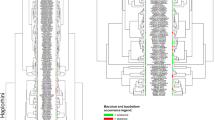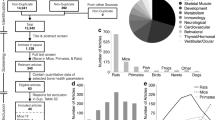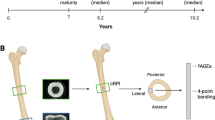Abstract
IN a recent letter in Nature, Prof. Harris1 gave radiological evidence for the appearance of a separate epiphysial centre in the pisiform bone of sub-human primates. In view of the considerable theoretical importance which he attached to this finding, further observations have been made in this Department. A number of female Rhesus monkeys of accurately known age Were available for X-ray study. The result of this investigation has been a smooth and continuous record of the developing pisiform bone in the macaque monkey from birth to maturity.
This is a preview of subscription content, access via your institution
Access options
Subscribe to this journal
Receive 51 print issues and online access
$199.00 per year
only $3.90 per issue
Buy this article
- Purchase on SpringerLink
- Instant access to full article PDF
Prices may be subject to local taxes which are calculated during checkout
Similar content being viewed by others
References
Harris, H. A., Nature, 153, 715 (1944).
Quoted from Retterer, Ed., C. R. Soc. Biol., x, 617 (1898).
Albrecht, P., Pres. Médic. belge, 42, 9 (1884).
Baur, G., Zool. Anz., 8, 326 (1885).
v. Bardeleben, K., Proc. Zool. Soc., 354 (1894).
Retterer, Ed., G. R. Soc. Biol., x, 435 (1898).
Author information
Authors and Affiliations
Rights and permissions
About this article
Cite this article
ECKSTEIN, F. The Pisiform Bone. Nature 154, 182 (1944). https://doi.org/10.1038/154182a0
Issue date:
DOI: https://doi.org/10.1038/154182a0



